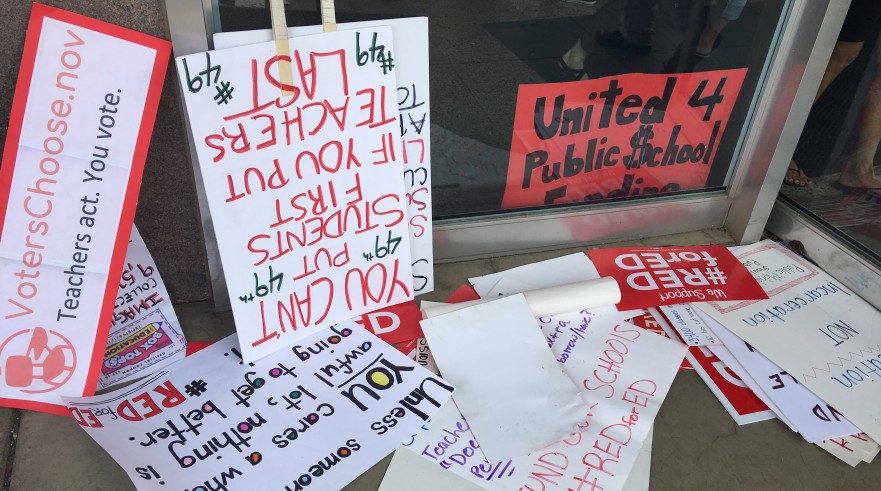An obvious epiphany occurred early in my first year of teaching: I am not going to be the teacher I thought I was going to be. The teacher I envisioned myself becoming never materialized. Over years, I had described,
Read MoreRequired Reading: What Every Educator Should Read
A social media trend took over this summer. As I scrolled through my feed, my friends began posting their “7 Day Challenges” ranging from books, music, movies, and personal photos. The challenge required participants to post pictures of their seven
Read MoreAddressing Dyslexia in Arizona, Part 3
As the year ended for my students and me, and we finally received their AZELLA results, I examined the test scores with a mixture of mostly pride in my students’ progress, along with a bit of sadness and a good
Read MoreKeep Calm and Click Submit: Tips for NBCT
Wednesday, May 16, 2018 was a historic day in the Clark household. No, we didn’t buy a new house or bring a baby home. In fact, most people outside of education probably have no idea what I am talking about.
Read MoreTwo-By-Ten Strategy Part 2
Earlier this year, I shared a blog about how teachers at my school are using the two-by-ten strategy to build relationships with at-risk scholars. You know the ones. The scholars that challenge our patience. The scholars who push back and
Read MoreClarity through Focus (Part 2) and #RedforEd
What I discovered at our school was something that we already knew: Although we are an urban-based public school within a district with issues mirroring the nation, we had little to no annual teacher turnover. Our students return to a
Read MoreFive Things I Learned in the Red for Ed Movement
Over the past six weeks or so, I have served as site liaison for Arizona Educators United as the Red for Ed movement evolved from t-shirt activism to an unprecedented statewide walkout of Arizona teachers. It has been an intense
Read MoreHitting the Like Button: Using Social Media to Grow an Online Community
I joined Facebook in 2002 when you had to have a college email address to sign up for the social media site. Each day I checked my account in anticipation of the new friend requests I received. Over the years,
Read MoreClarity through Focus Groups (part 1)
Focus group questions projected on the Smartboard? Check. Handouts with the questions so the teachers can follow along? Check. The Asian food I had ordered for our group was out and other snacks are ready to be eaten. Clean tables
Read MoreDo We Really Need 200 School Districts?
Stories from School Blogger Beth Maloney recently wrote the article The Problem with Teacher Pay in Arizona and One Possible Solution . This interesting piece proposes that a statewide salary schedule will equalize pay for teachers while considering qualifications and
Read More









